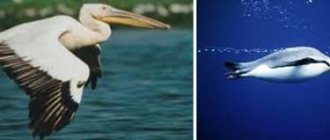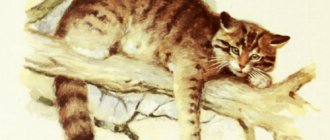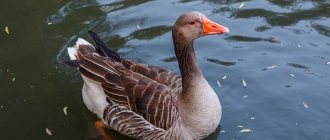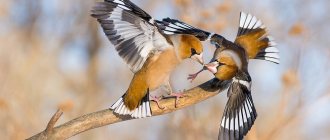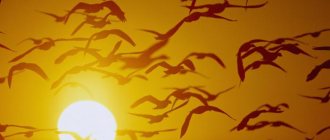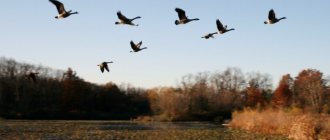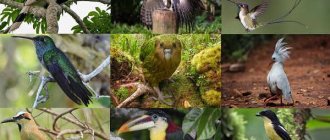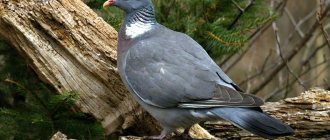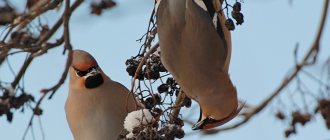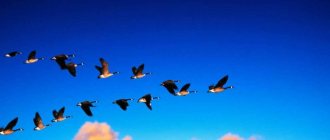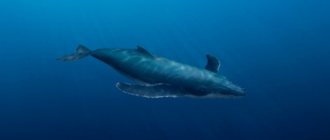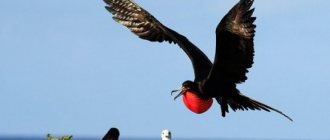Features of fauna and climate
The Krasnodar region, located in the southwest of the North Caucasus, is often called Kuban - after the name of the main river with numerous left tributaries. The river divides the region, which occupies 75.5 thousand km², into 2 parts - southern (foothill/mountain) and northern (plain).
To the many small rivers are added Lake Abrau, the largest in the North Caucasus, small karst lakes, as well as estuary lakes common to the coast of the Sea of Azov and the Taman Peninsula. In addition, the Azov Sea splashes in the northwest of the region, and the Black Sea splashes in the southwest. There are over 30 mud volcanoes on the peninsula, active and extinct.
The relief of the Taman Peninsula is considered complex due to the alternation of coastal lowlands with the western spurs of the Greater Caucasus, estuary deposits, riverine levees and delta lakes. In general, the plains account for about 2/3 of the territory of the region.
The climate here is predominantly temperate continental, turning into a semi-dry Mediterranean on the coast from Anapa to Tuapse, and into a humid subtropical one south of Tuapse.
Altitudinal climatic zonation is noted in the mountains. The weather changes dramatically throughout the year: temperature fluctuations are typical, including interannual, seasonal and monthly fluctuations. The Krasnodar Territory is characterized by mild winters and hot summers, which attracts many heat-loving animals, including birds.
Return to content
What is the significance of the Black Sea coast for humans? Black Sea: description, photo, video
Do you want to relax in the summer somewhere near a warm seashore, but you don’t have the opportunity to fly to the islands? Today we will offer one of the budget and well-known analogues - the Black Sea. The Black Sea washes the territory of Crimea. It merges with the Sea of Marmara and the Mediterranean Sea, the Sea of Azov and the Kerch Strait. The sea area is 423 thousand square meters. km., and the greatest depth is 2245 m. More than 10 rivers flow into the sea, such as the Dniester, Danube, Don, Kuban, Dnieper, etc.
Black Sea
It washes the shores of Ukraine, Russia, Bulgaria, Romania, Turkey, Georgia and Abkhazia. The climate near the Black Sea is mild Mediterranean; in summer the sea heats up to +24 degrees Celsius. This is why tourists flock to this beach in the summer.
Due to the fact that the Black Sea washes several countries. It is easy to guess that maritime transport is very well developed in them. Accordingly, there is a lot of industrial waste and garbage due to the transportation of petroleum products. Subsequently, many living beings died, and the remaining part continues to decline to this day. Therefore, if you are vacationing somewhere in the summer, be so kind as to clean up your trash. Don't destroy nature.
Panorama of the Black Sea
It's no secret that the Black Sea is famous among Russian resorts. It is best known for its healing properties of sea waters, favorable climate and inexpensive tours. When you go on vacation to the Black Sea, you will never be disappointed, because you will have the opportunity not only to bask on the warm sand near the sea and swim in a fresh reservoir, but also to see the cities located on its coast. Find out their history and stroll through its streets.
Forest birds
Forests cover about 1.5 million hectares, which is equal to 22.4% of the region's area. In Kuban, hardwood species (oak and beech) predominate - more than 85%, while conifers make up less than 5%. Forest birds inhabit both broad-leaved and mountain dark-coniferous forests with a predominance of spruce and fir.
Caucasian black grouse
A mountain bird that lives in the Caucasus Range (up to 2.2 km above sea level) and prefers to nest along the edges of the forest, in low-growing dense bushes. The Caucasian grouse is smaller than usual: males have dark, almost black plumage with a white border along the bottom of the wings and tail feathers curved at the tips. Females are duller than males, who are more attractively and brightly colored.
The protective coloring helps to hide from enemies - the black grouse is reluctant to fly, it is easier for him to wait out, hiding among the bushes.
Vegetation predominates in the diet:
- needles;
- juniper berries;
- blueberry;
- cowberry;
- crowberry;
- various seeds.
Needles become the main food in snowy winters, when other plants are not available. Birds hunt for insects in the summer to feed their chicks.
Golden eagle
A proud bird from the hawk family, choosing for nesting forests with steep rocky cliffs, where it is difficult for ground predators to reach. Golden eagles are territorial and sedentary, sticking to their own areas where they build nests and hunt.
The golden eagle has dark, brown-brown plumage, but golden feathers are visible on the back of the head. Juveniles have white feathers at the base of the tail and under the wings (the color becomes darker as they mature). Wide wings are adapted for hovering/maneuvering and reach a span of 2 m.
The golden eagle's menu consists not only of freshly caught game (small rodents, ducks and galliformes), but also of carrion.
The golden eagle is classified as a top predator, having virtually no enemies in the wild. Other carnivores do not hunt adult birds, and golden eagles' nests are hidden high and securely.
Pygmy eagle
It bears the unspoken title of the smallest eagle on the planet, growing slightly larger than a kite and weighing 1–1.3 kg, with males being slightly larger than females. It nests in dense forests and thickets, where, due to its compactness, it easily maneuvers between branches. Depending on the predominant tone of the plumage (light or dark), it is divided into 2 varieties.
The dwarf eagle has strong, fully feathered feet with curved talons and a tenacious beak, with which it catches game. The predator's menu includes mammals, birds and reptiles:
- hares and gophers;
- small rodents;
- larks and starlings;
- blackbirds and sparrows;
- turtle doves and corncrakes;
- chicks and bird eggs;
- lizards and snakes;
- insects, for example, termites (in wintering areas).
Swooping down on a poisonous snake, the eagle kills it with a blow to the head with its beak, but sometimes it itself dies from the bite or loses its sight.
Return to content
Rock pigeon
The favorite place of settlement for the “Sisars” is mountains and rocks, where they build their nests. Individuals of the species are also found in forests, and in urban environments they have found a niche for themselves. Although most often the gray ones lead a sedentary lifestyle, from time to time they still move from their place, covering entire continents in flight.
Distinctive features:
- in males the wing length is 22 cm;
- females have slightly shorter wings, 21.5 cm.
We invite you to read: Why cats are treated with ceftriaxone Pharmacological properties of Ceftriaxone
The gray one feeds on seeds of plants in the area in which it lives. He prefers wheat grains, collecting it directly from the ground and thereby clearing rural fields.
Birds tend to build nests in places where it would be more difficult for predators to reach them. In cities, such places are roofs of buildings and attics. Making a family nest is the exclusive prerogative of the “man”; it is he who collects suitable twigs and tufts of grass throughout the area. The “lady” arranges the nest itself.
Rock pigeons build nests out of reach of predators. In cities these are roofs and attics
Steppe birds
The steppes of the Krasnodar region extend to the mountain ranges of the Greater Caucasus and the Black Sea coast, located south of Anapa. Many birds of open spaces are listed in the Red Book of Kuban.
Little Bustard
This representative of the bustard family willingly inhabits virgin lands, steppes and semi-deserts, without suffering much from moisture deficiency during drought. The little bustard is the size of an average hen, but more interestingly colored, especially if we are talking about a male during the breeding season - mottled brown (top) wings, light breast/bottom and elongated neck, decorated with black and white “necklaces”.
In the area of the Black Sea coast, little bustards appear by mid-April and create pairs, laying 3-4 eggs, from which chicks hatch three weeks later.
Interesting. The female little bustard often dies under the wheels of tractors and combines, as she selflessly sits on the clutch, protecting her offspring.
Little bustards' food preferences are limited to insects and vegetation (shoots, seeds and roots). The flight of birds to wintering begins at the end of September, ending by mid-November.
Snake eater
Also known as the snake eagle, or crachun. He is extremely wary of people, fearful and distrustful. In the south, it settles both in forests and in open dry areas, where there are individual trees suitable for nesting. The snake eagle is no more than 0.7 m tall with a wingspan of 1.6–1.9 meters. Males and females are similarly colored, but the former are usually smaller than the latter.
The name of the species tells about its favorite prey, but along with snakes, the crachun hunts other reptiles and amphibians, as well as small mammals and field birds.
It is not easy for the snake eagle to feed its offspring. The chick itself pulls the snake, almost swallowed by its parent, out of its throat by its tail. The duration of the procedure depends on the length of the snake. When the prey is pulled out, it begins to be swallowed (strictly from the head), which takes up to half an hour or longer.
Steppe kestrel
Small, the size of a rock pigeon, a predator of the falcon family. It is similar to the common kestrel, but is inferior to it in size, also differing in the structure of the wing, the shape of the tail and the details of the plumage.
In nesting colonies, the steppe kestrel is quite noisy: this quality intensifies many times during the mating season and after the chicks have fledged. The bird menu includes various living creatures (with a predominance of orthopteran insects):
- locusts and dragonflies;
- grasshoppers and crickets;
- mole crickets and beetles;
- centipedes and scorpions;
- small rodents (in spring);
- small reptiles;
- termites, African worms (in wintering areas).
It often hunts in packs, flying low over the steppe. It catches locusts and grasshoppers by running along the ground. Sometimes satiety turns into gluttony, when the volume of swallowed interferes with a rapid takeoff.
Return to content
aquatic animals
Animal species in the Krasnodar region that live in or near water are represented by rare fish and amphibians.
First of all, commercial fish are under threat of extinction, mainly due to human economic activities. Such valuable fish as Ukrainian lamprey, sturgeon, sterlet, stellate sturgeon, croaker, and thorn are desirable prey for poachers. That's why they ended up in the Red Book. They are under state protection.
1. Beluga is a highly valuable commercial predatory fish. Hunts other fish. Beluga caviar is a product of high nutritional value. It grows almost all its life, its weight reaches 1000 kg by the age of 15, and its length is 4.2 m. The average fishing weight in the Azov Sea is 60-80 kg. Long-lived. There are recorded cases of this fish being about 100 years old. Listed in the Red Books of the Russian Federation and Kazakhstan.
2. Abrau sprat, mustachioed char, Russian bystryanka - very tasty fish, which are also included in the Red Book due to pollution of water bodies and sanatorium-resort activities. And, of course, because of poaching.
3. White-eye is a freshwater carp fish with a laterally compressed body. Close to bream. Maximum weight - 1.5 kg, length up to 45 cm, age - up to 7-8 years.
4. Shemaya of the Black Sea of Azov is a ray-finned cyprinid fish.
5. Carp is a freshwater carp fish, close to roach. Lives in the basin of the Black and Azov Seas.
6. Chromobius four-striped is a spiny-finned fish up to 7 cm long; it has no commercial significance.
7. Light croaker is a sea fish that is prohibited from free fishing; its meat is recognized as a delicacy.
8. The yellow trigla or sea cock reaches a length of 75 cm and weighs up to 6 kg. The large head is triangular in shape, covered in ridges and spines, but quite smooth. The fishery is carried out using bottom trawls. The meat is very tasty
If you are planning to come fishing, we recommend paying attention to the following types of fish: trout, chub, perch, rudd, roach, roach
Birds of the coasts
This category of birds settled along the banks of the Kuban and its left tributaries (Laba, Urup, Belaya and others), on the Krasnodar reservoir, as well as on the Black Sea and Azov coasts (with their small rivers). Some species occupied the coastal territories of estuaries, karst lakes and islands. Abrau.
Spoonbill
A migratory bird of the ibis family, a little similar to a heron, but more graceful than it. The most noticeable feature is the elongated flat beak, widened towards the end. The spoonbill is completely covered with white feathers, against which long black legs and a black beak stand out. By the mating season, birds acquire a characteristic crest: in females it is shorter than in males.
The common spoonbill eats annelids, insect larvae, crustaceans, frogs, and fish fry, occasionally switching to aquatic plants. It chooses reed beds near lakes for residence, and less often – willow groves. It nests in colonies, often adjacent to other species, for example, ibis or herons.
Karavayka
Belongs to the ibis family. It lives near fresh and slightly salted reservoirs, estuaries and swamps, as well as in shallow waters and flood meadows. The Karavaika lives in large colonies with birds such as pelicans, spoonbills and herons. It spends the night in trees.
It is a medium-sized bird with distinctive bright brown plumage, offset by a greenish/purple tint on the tail and wings. Males are larger than females and are crowned with a noticeable crest.
The Karavaika searches for aquatic invertebrates (leeches, insects and worms), periodically snacking on small fish and amphibians. The nests of loonies are destroyed by marsh harriers and hooded crows; many clutches are destroyed by floods, strong winds and when reeds/reeds are burned.
Osprey
It is part of the order Accipitridae and is found in both hemispheres of the Earth. It feeds on fish (99% of the diet), which is why it settles down near reservoirs, swamps, rivers and lakes. They nest in places that are difficult for terrestrial predators to reach - on small islands, above water, on dry trees, buoys - wherever it is possible to build a voluminous nest up to 1 m in diameter and 0.7 m in height.
The osprey is adapted for underwater fishing. It has longer (compared to other birds of prey) paws, armed with convex and curved claws. The outer finger faces backward, which allows you to hold slippery fish, and the nasal valves block the path of water when diving.
Return to content
Coot
The coot represents the waterfowl of the Kuban. It is similar in size to a duck and reaches a length of forty centimeters. The bird is found in steppe regions, in the upper reaches of the Kuban River. She prefers estuaries, river valleys and slightly salty or fresh lakes. It builds nests directly in the water, in areas with shallows or in reed thickets.
The body of the coot is matte black or dark gray, with a small white spot on the head (this is where the name comes from). The bird's beak is also white, slightly compressed laterally. The legs are yellow, and the toes are long and gray, with wide webs.
In addition to the Krasnodar Territory, the coot lives in Asia, Africa, Northern and Western Europe, Australia and the nearest islands, the Mediterranean and the Far East.
Waterfowl
The habitat of these birds coincides with the habitats of coastal birds - these are all rivers, lakes, seas and reservoirs of the Krasnodar Territory. Only water is a native and closer element for them.
Chegrava
A large bird from the gull family, up to 0.6 m in length, weighing up to 700 g and a wingspan of up to 1.4 m. Distinctive features are a strong red beak, white plumage, dark brown paws and a slightly forked tail. Females and young animals are colored the same. During the breeding season, the head is decorated with a black beret.
Fact. Lays eggs once a year. The clutch (2–3 eggs) is incubated by both parents alternately.
Blackbirds create colonies on islands and sandy seashores, and in flight they slowly flap their wings (not like other terns). The best food is fish, but from time to time the blackfish eats insects, small rodents, and chicks/eggs of other birds.
Great Grebe
She's a big badass. The bird is the size of a duck, with a graceful neck and a straight beak, colored in three tones - white, red and black. The mating outfit of the great grebe is complemented by a red “necklace” and a pair of dark feather tufts on the head.
Great grebes build floating nests (made of reeds and cattails) up to 0.6 m in diameter and 0.8 m in height, where females lay 3–4 eggs. When leaving the nest, the great grebes do not forget to cover the clutch with aquatic plants, protecting it from direct sunlight and dangerous visitors.
The mother carries the hatched chicks on her back for 2 weeks, occasionally going down to the water with them. The great grebes dive and swim well, getting their main food - shellfish and fish. It flies well and quickly, however, only when necessary.
Return to content
Night heron
The common night heron is also called the night heron. She bears little resemblance to members of her family. Unlike other herons, its beak, legs and neck are not so long. Young birds have brown plumage. As they grow, the color changes. The sides and belly become white, and a black stripe stretches from the beak along the entire back. Several long white feathers grow on the back of the head.
The night heron settles near bodies of water with dense vegetation and in forests. It lives on all continents except Antarctica and Australia. It is not active during the day and can sit motionless for many hours. With the arrival of dusk, she “comes to life” and begins hunting frogs and fish.
Birds of the Red Book
The first Red Book of the Krasnodar Territory was published in 1994, but acquired official status only 7 years later. The latest edition of the regional Red Book analyzes the state of the fauna of the Russian Federation, threats (real and predicted) to its diversity, especially to species living in the Kuban.
Important. Currently, the Red Book of the Krasnodar Territory contains over 450 species of local flora/fauna, including 56 species of rare and endangered birds.
The list of protected animals includes the black-throated loon, Dalmatian pelican, crested cormorant, little cormorant, spoonbill, ibis, white and black storks, red-breasted goose, duck, steppe harrier, pygmy eagle, white-eyed duck, snake eagle, osprey, white-tailed eagle, small spotted eagle, griffon vulture, golden eagle, black vulture, vulture, bearded vulture, peregrine falcon, steppe kestrel, Caucasian snowcock, gray crane, Caucasian grouse, chukar, demoiselle, bustard, great bustard, little bustard, golden plover, stilt, sea plover, avocet, curlew , meadow and steppe larks, black-headed gulls and gulls, sea doves, blackfinches, gull-billed and little terns, eagle owls, wood larks and horned larks, gray shrike, red-headed wren, wallcreeper, great lentil, pallid tern, spotted rock thrush and short-toed pika.
Tags: waterfowl, Red Book, Krasnodar region, Kuban, forest birds, Birds, coastal birds, steppe birds
Laying hen maturation
As you know, the Kuban is considered one of the fastest maturing egg breeds of domestic origin. Hens begin their diligent work at four months of age, and excel at it. Today, this cross boasts high egg productivity - even up to 330 eggs per year!
All eggs are large and have a dense golden or light brown shell.
It is very important to help the growing body of a young laying hen at the beginning of her working life, because she needs a lot of calcium
If you do not enrich her diet with special supplements, an exhausted worker may begin to eat her eggs, and over time this threatens to develop a bad habit.
Helpful advice: if you want to start breeding this cross, but do not want to bother with chickens, buy four-month-old birds. Otherwise, you risk missing peak performance.
Similarity to a butterfly
Although the hummingbird is a bird, it does not feed on worms at all, although small larvae are not alien to it. Basically, this little one drinks nectar from flowers, which makes it even more like butterflies. By the way, it does not land on a flower, but feasts on nectar thanks to its long beak, reminiscent of a mosquito’s proboscis. She literally hovers in space, while creating the impression of absolute static, although the wings do not stop their frantic flapping for a second. Hawkmoth is a large butterfly that feeds on flower nectar in the same way as hummingbirds. These types of giant butterflies have been living in the Krasnodar region for quite a long time and were noticed precisely during the period when news of the appearance of hummingbirds in southern Russia spread. Although skeptics are sure that this is a hawk moth, and not a tropical bird.
Already Colchian
The name already speaks for itself, that this is our endemic species. It is found in the Imereti Lowland, likes to settle in the valleys of the Mzymta and Psou rivers, and swims very well in the rapid currents of these mountain rivers. The massive body, up to 120-130 cm in size, has a rich charcoal color. But individuals can also be found with yellow “stars” on their backs. Its main distinguishing feature is its large head. That's why the second name is big-headed grass snake. The Colchian grass snake emerges from its wintering quarters as one of the first, in March, and is sportingly active until the first frost. All snakes, including the Colchis snake, are more peaceful than snakes. And in case of danger, if they don’t have time to crawl away, they will simply pretend to be dead. The species is included in the Red Book of the Krasnodar Territory and the International Red Book.
Already aquatic
If you are a Sochi resident, you probably know where the Agur waterfalls are located in the Khostinsky district. On a hot sunny day, if you approach the lower, largest waterfall, you can see small light gray snakes jumping vertically out of the water. Meet the future beauties - His Majesty the Water Snake. The color is usually olive with patterns of dark spots arranged in a checkerboard pattern. Therefore, people often call it “chess”. He has absolutely nothing to do with the chess viper! It is absolutely harmless to humans. In fact, he, like all snakes, does not pose a danger to humans, but rather gets scared himself, to which he reacts with a hiss and at the same time can emit an unpleasant odor and secrete a very smelly white liquid from his skin. Remember the media noise last year, when a video of a snake in the sea, filmed by vacationers on the beach, spread all over Sochi? It’s impossible to count how many of these harmless snakes, mistaken for a “chess viper,” were killed. But this is just the same merman. They can be found at the mouths of rivers flowing into the sea. And don’t be afraid if you meet him in the water, just swim away.
Pygmy eagle
The pygmy eagle lives in the mixed forests of coastal areas. This is a fairly common bird in Kuban. The eagle can settle in forest-steppe and steppe, and sometimes in coniferous forests. In the Krasnodar Territory, it inhabits the environs of Novorossiysk, Gelendzhik, Mezbay and Psebay.
The bird is small in size. It resembles a buzzard, but has characteristic eagle-like features. The tail of the dwarf eagle is long, the wingspan is 1.3 meters. The beak is curved and short.
Pygmy eagle
The pygmy eagle lives in the mixed forests of coastal areas. This is a fairly common bird in Kuban. The eagle can settle in forest-steppe and steppe, and sometimes in coniferous forests. In the Krasnodar Territory, it inhabits the environs of Novorossiysk, Gelendzhik, Mezbay and Psebay.
The bird is small in size. It resembles a buzzard, but has characteristic eagle-like features. The tail of the dwarf eagle is long, the wingspan is 1.3 meters. The beak is curved and short.
There are two colors of plumage of these eagles. One is dark, brown-brown, sometimes reddish or golden. The other is light brown with a darkish bottom. The peculiarity of the birds is their large head and shaggy strong legs.
Live
- Publications
- ads
- kvazimodo → A mosquito with the Zika virus on the border with Russia. Statement by Onishchenko 1 to the Blog named after. kvazimodo
- pijo → How to get my money back? 2 in Blog named after. pijo
- vsnarodnyn1 → “Skeleton in the closet” by Anna Kolmagortseva, which does not exist and never existed... 6 in Blog named after. vsnarodnyn1
- vsnarodnyn1 → Another arrest in Sochi at a rally in support of Khabarovsk on August 22 in the Sochi commune
- nordman → Technical supervision of the State Traffic Safety Inspectorate of Sochi – level “GOD” 15 in Automotive Sochi
- URPSO → The URPSO women's team dedicated the climb to Pseashkha Sakharny (3188.9) to the Day of the Flag of the Russian Federation 1 in the Southern Regional Search and Rescue Team of the Ministry of Emergency Situations of Russia
- Shuruban → I'm not a volunteer, I'm caring!!! 32 in MDD (workshop of good deeds)
- Ikipia → Engineers: who gets paid how much? 46 in Blog named after. Ikipia
- bakc → Another residential complex in the zone of medical and recreational institutions in Khosta 42 in Blog named after. bakc
- span → Unauthorized construction on Roz Street 6 in Bred in Sochi style
- so3537 → Karalarsky Natural Park of Crimea 9 to the Sochi Branch of the Russian Geographical Society
- Suricat → Thank you for your support! First drawing lesson 1 in Sochi Culture
- hinds → 29.08 // Travel to places of power with an English-speaking guide - to the Barn and Anakopia in the Blog named after. hinds
- marmuh → Visual impairments of traffic police officers 87 in Automobile Sochi
- Ulyana231289 → Friends, Artyomik really needs your help for rehabilitation!!! The boy is disabled. 2 in MDD (workshop of good deeds)
- IvanFed → Find native fighter 6 in History of Sochi
- nordman → As is the mind, so are the speeches (Russian folk saying) 10 in Automobile Sochi
- sochielektroseti → Information about planned power outages in housing and communal services
- Arterain → Valentina Legkostupova. Last interview in Sochi. 2 in Musical Sochi
- vsnarodnyn1 → Prohibited debates of candidates for governor of the Krasnodar region... 13 in Sochi commune
- Milica → Cool parking near moremall 7 in Blog named after. Milica
- Suricat → Free drawing lessons for those born in 1965 and earlier in Culture of Sochi
- G-Tex → in Work
- G-Tex → in Work
- G-Tex → in Work
- G-Tex → in Work
- G-Tex → in Work
- G-Tex → in Work
- Skalagym → in Services
- podoplus → in Services
- Aliso4ek → 1 in I'll give it away for free
- velkom → in Services
- Terpsihora80 → in Services
- ViVishka → in Animal world
- popova226 → in Real estate
- Cairo → in Animal world
- amichael → in Buy
- geosochi64 → in Work
- kosmoc1976 → in I'll give it away for free
- chepr → in Real estate
- southcap → in Real estate
- amichael → in Buy
- ignatkb → in Buy
- Giademecis → in I'll give it away for free
RSS
Dalmatian pelican
One of the endangered birds of Kuban. In the region, the Dalmatian pelican settles in the area of the Taman Peninsula and the Eastern Azov region. Prefers areas with floodplains and estuaries. Currently, up to 70 pairs of pelicans live in the Krasnodar Territory. Their numbers are decreasing due to capture, extermination, and water pollution.
This is a large bird with a body length of up to 180 centimeters. Its wingspan reaches 3.5 meters. A characteristic feature of a pelican is its beak. It grows up to 50 centimeters in length. The Dalmatian pelican is white in color and has feathers that curl like curls on its head and neck.
Mostly birds stay in groups. They feed exclusively on fish, so they spend a lot of time on the water. They nest in reed thickets or on small overgrown islands.
Arctic
Despite the harshness of the Arctic natural zone, its conditions do not deter local birds. Most of the local bird fauna is represented by marine and waterfowl species.
Arctic Russia
Ipatka
Belongs to the family of guillemots. Hypata has an unusual appearance, similar to a puffin (belongs to this genus). The body is predominantly black, with a white chest and eye area. Bright orange legs and beak. Its diet consists of fish, squid, and zooplankton.
Ipatka
Great auklet
A beautiful and unusual bird from the order Charadriiformes. The great auklet is medium in size, weighing about 250 g. It has a dark brown back and a lighter chest. The orange beak stands out clearly, and on the forehead there is a high crest of feathers that bend forward.
Great auklet Interesting fact: great auklets have a unique feature - they have special feathers on their necks that give off a citrus aroma. If a colony of auklets lives at a distance of about 1 km, you can clearly hear this smell.
Burgomaster
The second name is the great polar gull. It is noteworthy that the bird received its unusual name because of its lifestyle. Arctic gulls live near bird colonies and take a kind of “payment” from their inhabitants in the form of eggs and even chicks. This species is omnivorous. Glaucous gulls build their nests on rocks.
Burgomaster
Caucasian viper
A little lower lives the Caucasian Viper or Kaznakova Viper, named after the director of the Caucasian Museum in Tiflis - A.N. Kaznakova. It can even be found on the territory of the Adler household plots and vineyards. It is very difficult to confuse this snake with others. It is relatively small - about 45 cm, but very massive. The head is wide, depressed at the top, clearly demarcated from the neck. She has a bright color that can change. Red, black and orange tones predominate.
Its poison is dangerous and deadly for the animal! But not fatal to humans. The sensation is like a hornet sting, and the consequences are very painful. There was not a single fatal case not only here, but throughout the entire habitat of the Caucasian viper - from Tuapse to Turkey.
Like all vipers, there are two sharp fangs on the upper jaw; they are connected to poisonous glands. The fangs are designed so that they can take a vertical position. When bitten, the viper pierces the skin and passes poison through the internal channels of the teeth.
The viper does not attack first. But if someone steps on her tail, wait for an answer, it will be lightning fast.
Dalmatian pelican
One of the endangered birds of Kuban. In the region, the Dalmatian pelican settles in the area of the Taman Peninsula and the Eastern Azov region. Prefers areas with floodplains and estuaries. Currently, up to 70 pairs of pelicans live in the Krasnodar Territory. Their numbers are decreasing due to capture, extermination, and water pollution.
This is a large bird with a body length of up to 180 centimeters. Its wingspan reaches 3.5 meters. A characteristic feature of a pelican is its beak. It grows up to 50 centimeters in length. The Dalmatian pelican is white in color and has feathers that curl like curls on its head and neck.
Mostly birds stay in groups. They feed exclusively on fish, so they spend a lot of time on the water. They nest in reed thickets or on small overgrown islands.
Cormorants
There are about 40 species of cormorants. All of them are shore birds, staying near the seas and oceans. Cormorants have long necks and beaks. The latter is pointed and slightly curved at the end. The feathered families are large, 50-100 centimeters in length. Here are some examples:
1. Bering cormorant. From the name it is clear that the bird is eastern. The plumage of the Bering cormorant is black, violet on the neck, and metallic on the rest of the body.
2. Small. This cormorant has a reddish neck against a black plumage with a metallic green sheen. You can see birds in the deltas of the Dnieper, Danube, and Dniester.
We recommend reading: What is included in the concentrate?
3. The red-faced cormorant is not related to the Indians. The bird's eyes have bare skin that is red-orange in color. Waterfowl are often named according to their external characteristics.
Most cormorants are protected. Some species are included not in the Red Book, but in the Black Book, that is, they are extinct. An example is the Steller's cormorant. He lived on the Commander Islands, did not fly and was distinguished by a white mark on his thigh.
Order Anseriformes
These are the well-known ducks, geese and swans. They have horny plates or teeth of various sizes and shapes along the edges of the beak, and at the end of the beak there is a thickening - the marigold. Anseriformes are brood birds.
Picture: Waterfowl - greylag goose, whooper swan, mallard drake, female mallard
Ducks
They form pairs only for one season. Males are brightly and variedly colored. They do not participate in the incubation and education of the young. Females have a camouflage, brownish-variegated color. Nests are mainly made on the ground, under shelters: under bushes, piles of brushwood, overhanging grass. The female lines the nest with down, which she plucks from her chest. When she leaves the nest to feed, she covers the eggs with this fluff so that they do not cool down and are hidden from the eyes of predators.
The most common is the mallard, the ancestor of domestic ducks; it is distributed throughout the temperate and high latitudes of Europe, Asia and America. Ducks feed in shallow waters, lowering their heads into the water and filtering small plant and animal organisms through the beak plates.
Geese
They are larger than ducks. Males and females are colored the same. They feed almost exclusively on plant foods. The beak is strong, its edges have teeth - with them geese cut off leaves and stems of plants, like scissors, and grab grains with the nail at the end of the beak. Not only do they swim well, but they can also move quickly on land. They nest in places where they are not disturbed in large colonies, and in other places in separate pairs. The female incubates, but the male stays nearby, and both parents go with the brood. Before leaving for the winter, they form large flocks, and in a flying flock the geese are arranged in a triangle.
The ancestor of domestic red-billed breeds is the wild gray goose.
Swans
These are large birds weighing up to 12 kg, with a wingspan of up to 2.5 m, with a majestic posture. Males and females have the same pure white plumage. Like dabbling ducks, they feed in shallow waters, turning upside down, on bottom invertebrates and plant parts. The eggs are incubated by the female, and the male stays nearby, guarding the nest, while driving away other swans. The pair lasts a lifetime. Nowadays swans have become very rare. The small swan is listed in the Red Book. In some cities where there are parks with ponds, swans are kept as ornamental birds. Many ducks and geese are valuable game birds, providing excellent meat and valuable feathers and down.
Best articles: Karst: development, features and distributionNatural enemies of seagulls
Photo: Seagull bird
Most seagulls are fairly large birds; they fly quickly and have well-developed sense organs. As a result, they are not threatened by many predators—some species have almost no natural enemies at all. But for smaller gulls, these are large birds of prey, such as eagles or kites.
Attacks on gulls occur quite rarely, because flying into a flock is dangerous: usually the predator grabs one of the birds and retreats with it. Rarely, seagulls can be killed by sea creatures such as octopuses. Sometimes they are in danger on the ground - for example, they are hunted by foxes.
But predators do not cause as much damage to seagulls as their relatives themselves. They live in large colonies, where the aggressive and quarrelsome nature of these birds of prey is very evident: they constantly steal food from each other, fight over this or for other reasons, and even tend to attack the nests of their relatives.
Most often this happens on days when there is little prey and the birds begin to starve. It is quite difficult to keep the clutches intact, and then also to protect the chicks, when you also need to feed, and then feed the offspring. Therefore, many seagulls do not even have time to hatch from their eggs or die very young - they are simply killed by their relatives.
People also exterminate seagulls: in some areas they are considered a harmful bird that destroys valuable fish, although this is almost always not the case - they almost always hunt small fish that are not of commercial value. In some places there are simply too many of them, and they begin to interfere.
